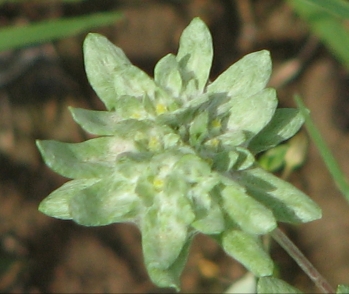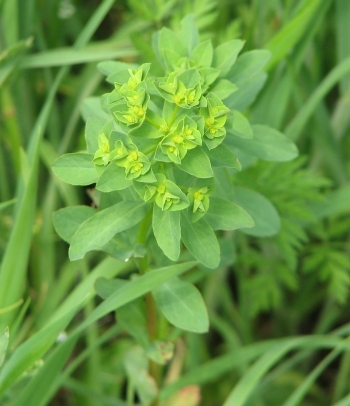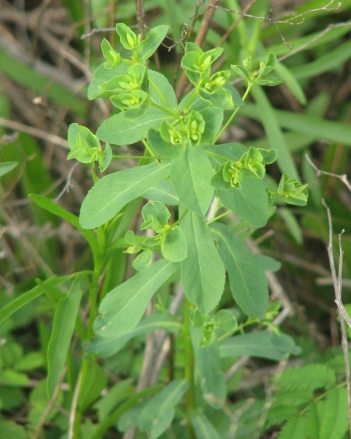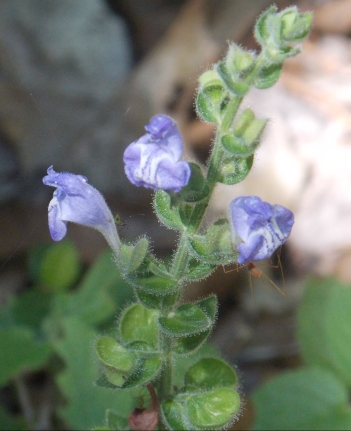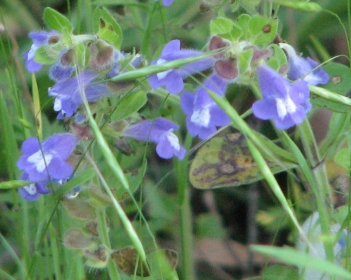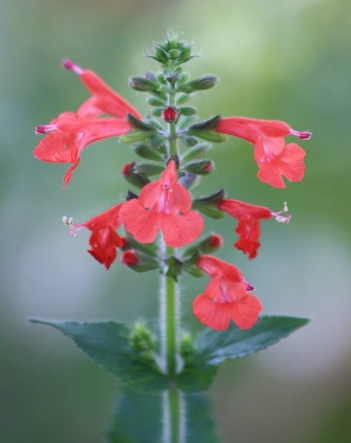Texas Sage Salvia texana. Not to be confused with the flowering shrub Leucophyllum frutescens by the same name, this diminutive, native flower is a short, low growing (10”), weakly erect fuzzy plant with short, upturned, needle like leaves arranged opposite each other along thin stems. Light blue tube flowers set in deep, fuzzy bracts emerge in opposite pairs from along the upper end of the stems. Flowers have a smooth, arching, narrow upper cap and a wide, four lobed lip set at right angles. The lip is marked by a set of parallel white stripes, and white anthers set deep within the tube. Unlike other salvia (sage plants), the leaves of this species do not have an aromatic smell. Chalky flats (not in book) 5/10/16- ; 5/10/17; 18 no obs. 4/22/19; 4/20/20

Texas Sage habit; a low growing, weakly upright flower with fuzzy stems, small, upturned opposite leaves, and bright blue tube flowers set in fuzzy, green bracts.

Note; short, weakly upright, fuzzy plants with flowers emerging singly from leaf nodes along the upper end of the stems
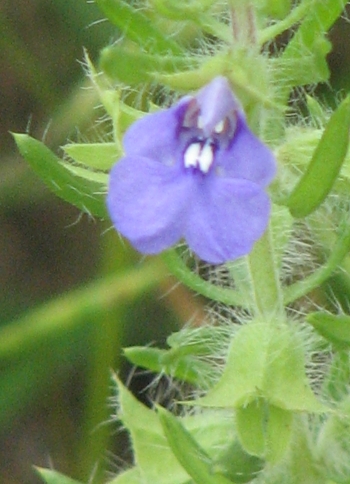
Note; the light blue, tube shaped flowers that open to a smooth, arching cap and a wide, 4 lobed lip set at 90 degrees to the column.
Note; light blue tube flowers set in deep, fuzzy, green bracts
Note; light blue flowers, down-turned 4 lobed lip with twin white dots, and white anthers deep within the tube




